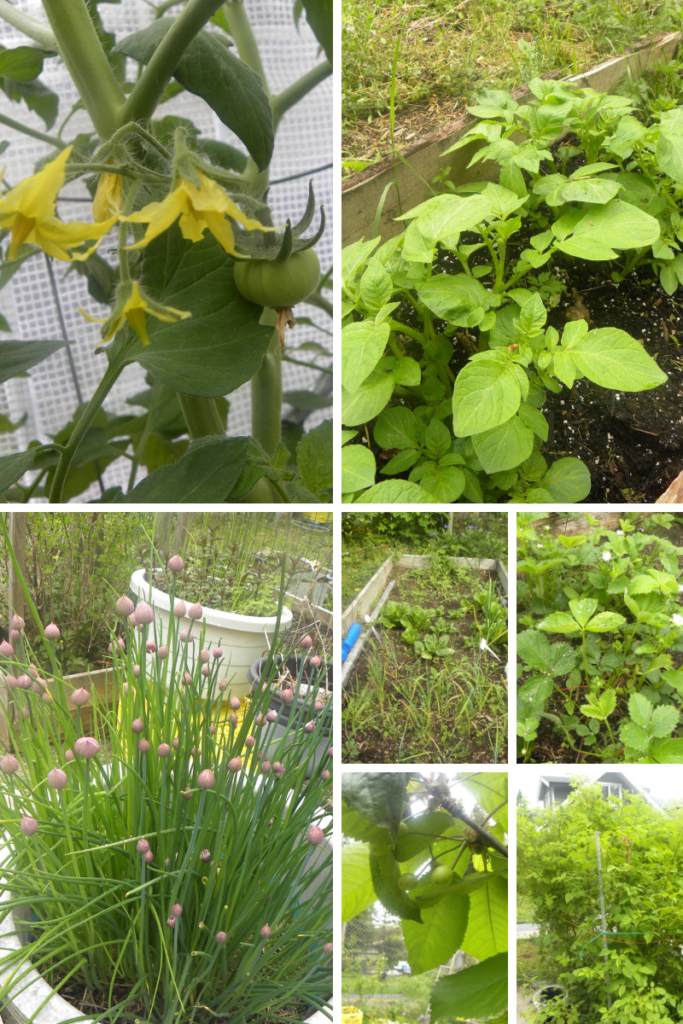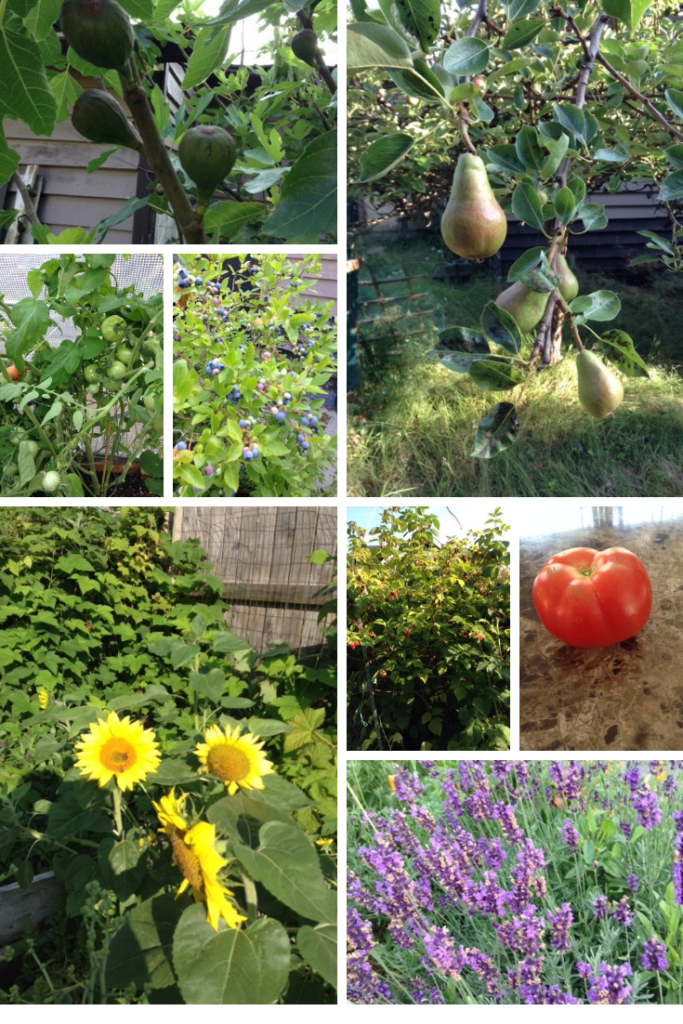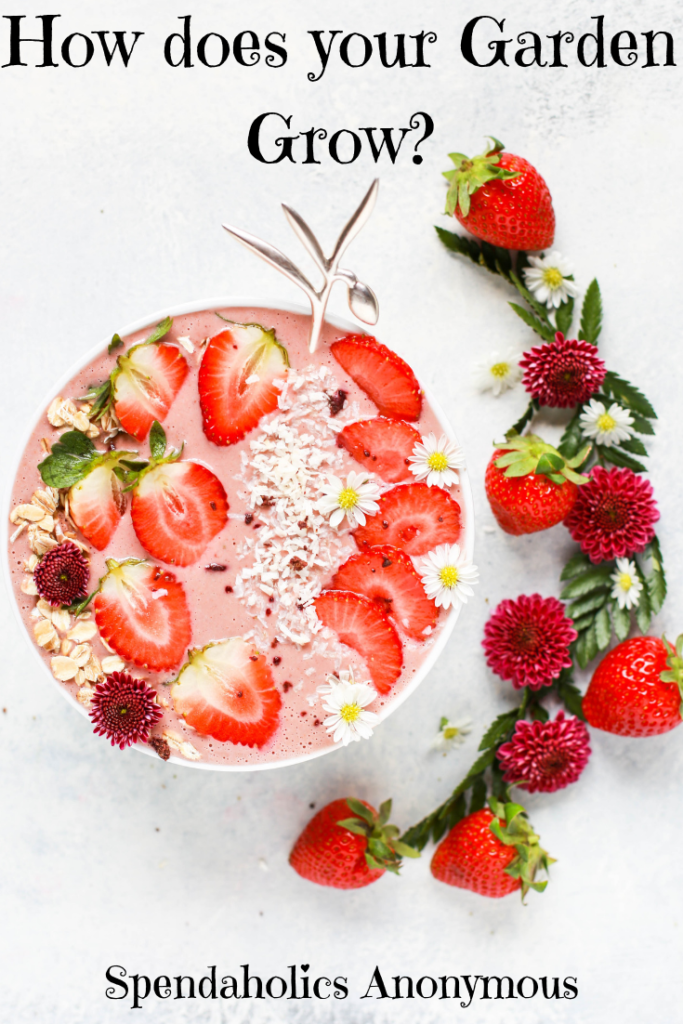Disclosure: Some of the links below are affiliate links, meaning, at no additional cost to you, I will earn a commission if you click through and make a purchase .
How does your garden grow?
What does Gardening and Food Security have to do with Debt reduction?
Pay the rent, or put food on the table? It sounds like an unthinkable choice but It’s one faced by more than a million Canadian households, a Statistics Canada report has revealed.
In the annual HungerCount report, It says the use of food banks remains 25 per cent higher than it was before the devastating global recession in 2008 and that 37 per cent of those helped are children.
According to the HungerCount 2014 report, 841,191 people received food from a food bank in Canada last March, a month that is considered average for food bank use. That’s up one per cent over the same period last year and remains 25 per cent higher than in 2008.
Canadians visited food banks 1.1 million times in March 2018.
The fact that we have an “Annual Hunger Count” might come as a bit of a shock to my fellow Canadians.
During our darkest days of debt we thought about visiting the food bank but pride would not allow it. This would have been a strategic decision to supplement our stores, garden and meager allowance with staples. I’m glad we didn’t do it. Ours wasn’t a choice between rent and food. It was a choice between feeding the collection hounds or paying the mortgage. As it stands – we managed to get rid of the collection hounds, keep the house and still eat….thanks to our garden.
The rise of the food bank.
Food bank use has remained high long after the recession’s worst economic ravages were supposed to be over. Many of their users are working; many are highly educated, but they still can’t afford to feed themselves and their families.
Ontario food banks, which said late last year they’ve seen a 20 per cent spike in new users, are also seeing more of their clients become regulars: Food banks in the Toronto region, often a place of last resort associated with the shame of poverty, are for many no longer a temporary solution.
A new report says the number of households in Ontario turning to food banks for the first time has shot up by 20 per cent since last year.
The report from the Ontario Association of Food Banks found just over 17,000 households used food banks for the first time this March, compared to 14,206 last year.
Last month, Food Banks Canada said in its annual report that one in every six households helped by food banks has income from current or recent employment.
Statistics Canada’s report on food insecurity measured the number of Canadians who can’t get the healthy food they need because they can’t afford it.
The number of Canadians who can’t afford to feed their families may come as a shock to residents of one of the richest countries on earth.
“It’s outrageous that 4 million Canadians are living in some form of food insecurity.”
“This [report] is saying that, actually, there are quite a few people falling through the cracks. So many, we wouldn’t want to call them cracks any more. We might want to call them big, huge holes.”
POVERTY IS THE ROOT CAUSE OF FOOD BANK USE.
The driving factor behind food bank use is poverty. Economic disruptions (like major job losses), low incomes, and government policies that don’t provide adequate support are what keep the number of food bank users persistently and unacceptably high. Food banks from coast to coast to coast are there when people must choose between shelter, clothing, and feeding their family.
Each March, Food Banks Canada surveys thousands of food banks across Canada to provide a snapshot of current food bank use. The HungerCount report establishes an up to date understanding of hunger in Canada in order to support advocacy for change. This report provides an overview of these findings as well as policy recommendations to reduce the need for food banks.
For HungerCount 2018, Food Banks Canada has updated its methodology and is reporting visits, not individuals, as the core metric to better demonstrate food bank use and the need for food banks across Canada. This is a new baseline number for 2018 and should not be compared to previous HungerCount reports as these numbers aren’t comparable.
59% of households accessing food banks list Social assistance or disability related supports as primary source of income.
35.2% of those relying on food banks nationally are children, while representing only 20% of the population.
Food bank use remains at historical levels. While food banks are doing everything that they can to help those in need, they are not able to address the root causes of why people need their support.
This is because the root cause of food bank use is, and always has been, related to poverty and low income – and these root causes can be most directly addressed through government policies.
How to spend less on food when the prices keep rising.
What can you do to help yourself?
Some of my posts have mentioned food storage (think doomsday preppers on a smaller scale); food preservation: canning and dehydrating; meal prep and grocery lists (meal planning) but today we look at growing healthy staples in your own garden. What is involved? How long does it take?
May 2019.

from top left:- tomatoes, potatoes, chives, onions/garlic/lettuce & sunflowers, strawberries, cherries and raspberries.
I currently use 11 raised beds and the picture above only shows three. It’s early days for most veggies. A lot are still in seedling form but many are starting to fruit. Always exciting!
We grow what we use. No use me planting Eggplant (Aubergines) – everyone hates em. I got rid of the Kale and replaced it with salad leaves we actually enjoy.
Many people will start straight off the bat by saying they have no space, no green thumb, no time. Let me say If you are in trouble with debt you will make the space and the time and give it a go. Nothing ventured, nothing gained.
There’s a misconception that you need specialist equipment, knowledge, expertise. Pfft, please.
I’m a city girl. This is first time I’ve ever lived rural and it’s been five years. I’m no expert. I have no specialist knowledge. I have experience and that’s what I’ll share here.
Where should you start…and when?
TODAY!!
Start with pots or patio containers and dwarf veggies: Cherry Tomatoes, patio zucchini, storage totes with salad leaves.
Many garden centres give away their empty plastic pots. Grocery stores will save their plastic buckets for you if you ask (ice cream stores are great for this). People are often leaving gardening pots, etc out by the roadside for people to take for free.
Soil:- I use bags of potting mix from my local Loblaws store (5 x 50L for $20).
Seed:- Dollar store at $0.99c per pack. It might not be the best or Organic but we can get choosy later once we are in a better position, economically.
Potatoes – take a few small ones from your regular bag of grocery store potatoes and plant them. Have you seen The Martian? If Matt Damon can grow spuds on Mars we can surely manage a small storage tote on the patio???
Same with Garlic. Split the bulb and plant a few out.
None of this is rocket science people but it does take work and time.
The bigger picture.
The above picture is my garden at the end of May 2019. My plan is to update for each month until the end of September.
I usually start seeds indoors around March 15th but this year was exceptionally dry (April on the edge of a rain forest is normally monsoon season). Most things have been directly sown this year straight into the garden beds early in April.
The raspberries and blueberries are obviously well established but most bushes will give some fruit in year two. Garlic should be planted in October of the year prior to the one you want to harvest in. Lettuce is a cold weather plant so get it out there in early March.
I usually visit a farm or local nursery around Mothers day and select two large, heirloom tomato plants that have been grown in a greenhouse. These are generally easier to actually obtain ripe fruits before the end of the growing season than from ones started from seed.
That being said I have a rather prolific small yellow cherry tomato (bush variety) than insists on self seeding. I have new tomato plants sprouting in my “Carrot” patch from last year!
This year I haven’t planted potatoes in any raised bed but – there they are. Left over from spuds not dug up in previous years. Unexpected bounty!
My “gift to me” this year was a small plastic greenhouse, Nothing spectacular but big enough for tomatoes and peppers. This is my first foray into greenhouse gardening so we will see what happens.
My point right now is, if food security is an issue for you and you WILL NOT go to the food bank (and you absolutely should) then there is another way to stretch those budget dollars.
XO
Anna
Mid July (update)




Leave a Reply